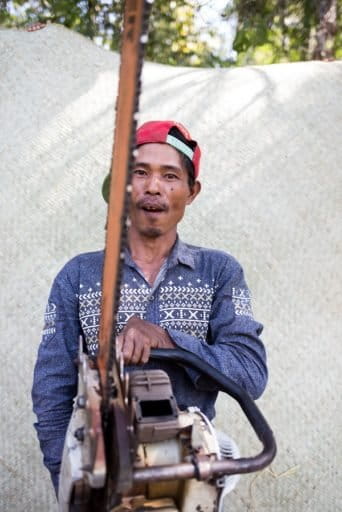- As Myanmar works to restructure to private sector management of the country’s forestry and timber resources, reports of illegal logging are surging.
- Until now, a government entity called the Myanma Timber Enterprise (MTE) has been managing forestry resources and overseeing the export of timber products.
- Myanmar instituted a domestic logging ban from 2016-2017 that forbade private export of timber resources, but it did little to stop illegal activity.
- Since April of this year alone in just one of the country’s seven regions, there were 276 reported cases of illegal logging, along with 656 tons of seized timber and 59 vehicles.
As Myanmar works to restructure its national timber authority and adopt a new fiscal calendar, the Southeast Asian country continues to struggle to control illegal logging. The country’s forestry management agency, Myanma Timber Enterprise (MTE) announced earlier this year it plans to restructure under private sector management.
Myanmar ended a one-year ban on domestic logging for export on anything other than MTE-stamped and stockpiled wood in 2017. The MTE has claimed that the illegal harvest and export of both prized teak and non-teak wood was “drastically reduced” during the ban.
It was reportedly largely ineffective.
In-country journalists and other eyewitnesses on the ground point to continued trafficking seizures and millions in payoffs believed to have been made to Burmese officials at just one border crossing with China. In addition, according to the Tropical Timber Market Report, there could be complex legal ramifications if plans to restructure the forestry department as a corporation within the government go through. The earliest the changes would into effect beginning in 2020.
Over the past 15 months since the end of the logging ban, there were 1,425 registered cases of illegal logging just in the centrally located Magway Region, according to officially released data. That’s more than 2,600 tons of illegal timber ferried mostly toward border points by 345 trucks.
It’s believed that teak and other types of timber are smuggled along a regular route through the area that traverses into Malaysia and Thailand via a series of townships in the restive northern Rakhine State.
There are no estimates of numbers of unregistered cases in the region. It’s also not clear why data for the country’s other seven regions were not announced. Full statistics and information about the country’s overall illegal logging situation are nearly impossible to obtain because a fair amount of illegal activity is nearly impossible to track.

Much of Myanmar’s illegal logging work is done at the individual and village level. Some villages are so well-organized that each participating person has a specific job and efforts to conceal illegal activity are coordinated and well-organized.
Myanmar recently announced that the change in its fiscal calendar would include a transitional period from April-September. Its new fiscal year will start to run from October-September.
Officials have told local media that since April 2018 alone, the Magway Region Forestry Department reported 276 illegal logging cases, 656 tons of illegal timber, and 59 vehicles. The smuggled timber was mostly teak and hardwood.
FEEDBACK: Use this form to send a message to the author of this post. If you want to post a public comment, you can do that at the bottom of the page.













